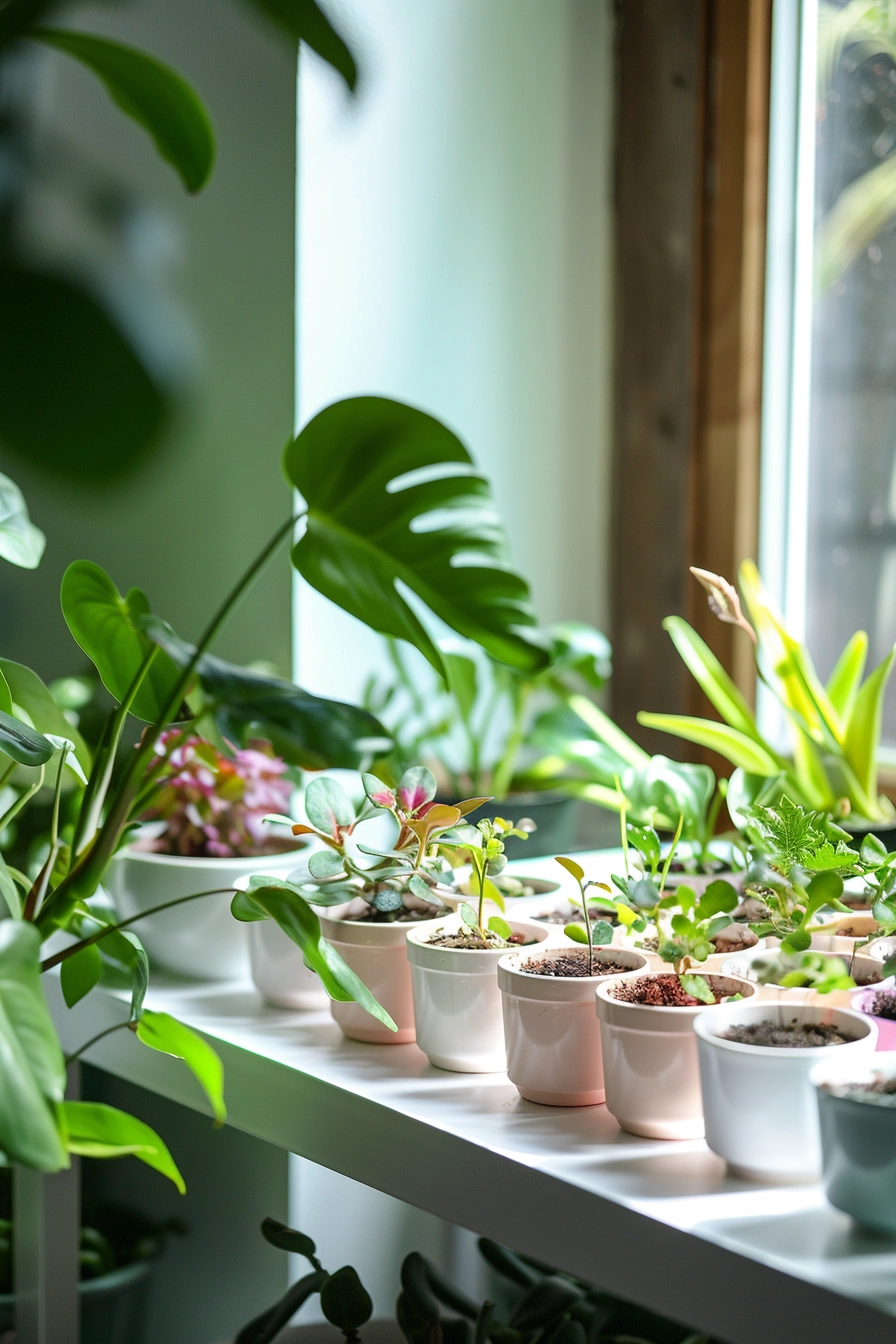Growing indoor plants from seeds is an exciting and rewarding endeavor for any indoor gardening enthusiast. Whether you have limited outdoor space, want to extend the growing season, or simply enjoy the satisfaction of watching your plants grow from tiny seeds, starting seeds indoors is the way to go. In this guide, I’ll share some valuable tips and techniques for successfully growing indoor plants from seeds.
Key Takeaways:
- Starting seeds indoors allows for earlier plant growth and extended harvest or flowering periods.
- Essential supplies for indoor seed starting include seedling trays, seed-starting soil mix, grow lights, a heat mat, and plant labels.
- Use seedling trays with cells for easy transplantation of the plants.
- Choose a sterile, lightweight, moisture-retaining, and well-draining seed-starting soil mix.
- Provide sufficient light using fluorescent or LED grow lights placed 2-3 inches above the seedlings.
Seed-Starting Supplies and Soil for Seeds
When starting seeds indoors, I always make sure I have the right supplies at hand. One essential item is seedling trays with cells. These trays are not only convenient but also efficient because they allow for easy transplantation of the plants once they have grown. To ensure proper drainage, it’s important to use a drip tray underneath the seedling trays to catch any excess water.
To create the optimal environment for seed germination, I also use a clear cover for the seedling trays. This cover helps retain moisture and heat, creating a mini-greenhouse effect. The combination of the trays and cover creates a controlled environment that promotes healthy growth.
“Seedling trays with cells are the easiest and most efficient choice because they allow for easy transplantation of the plants.”
Now, let’s talk about the soil for seeds. It’s crucial to use a specialized seed-starting soil mix that meets the specific needs of young plants. The ideal soil should be sterile to prevent the growth of harmful bacteria or fungi, lightweight for easy root penetration, and moisture-retaining to ensure a steady water supply for the germinating seeds.
A popular choice among gardeners is E.B. Stone Organics Seed-Starter Mix. This mix is specially formulated with the right balance of nutrients to support seedling development. Before sowing the seeds, I make sure to moisten the soil evenly to create the perfect environment for germination.

Note: When handling the soil, I recommend wearing a face mask to avoid any potential irritation or allergic reactions.
Lights and Heat for Seed Germination
In order for seeds to successfully germinate and grow into healthy seedlings, the right combination of light and heat is crucial. While natural sunlight may not always be readily available or sufficient, there are alternative options that can provide the necessary conditions for optimal seed germination. Two popular choices are fluorescent grow lights and LED grow lights.
LED grow lights are highly recommended for their efficiency and long lifespan. They emit the right spectrum of light that plants need for photosynthesis, promoting healthy growth and development. When using grow lights, it’s important to position them about 2-3 inches above the seedlings to ensure they receive adequate light. As the plants grow taller, adjusting the height of the lights is crucial to maintain the optimal distance.
Providing Optimal Light Conditions
Having the right light intensity and duration is essential for successful seed germination. It’s recommended to provide seedlings with around 12-16 hours of light per day. This helps to mimic natural daylight and provides the necessary energy for the plants to flourish. To ensure even light distribution, consider rotating the trays of seedlings every few days.
Using a Heat Mat for Warmth
In addition to proper lighting, maintaining the right temperature is equally important. Some seeds, especially those that require higher soil temperatures, benefit from additional warmth. A heat mat can be used to create an ideal germination environment. Placing the seedling trays on the heat mat helps to provide consistent warmth, accelerating germination. Once the seeds have sprouted, it’s important to remove the heat mat as excessive heat can hinder their growth.
An optimal combination of fluorescent or LED grow lights and a heat mat can significantly improve seed germination rates and promote healthy plant development. By providing the right amount of light and warmth, you can ensure that your seedlings have the best start in their growth journey.

Seedling Care and Transplanting
Taking care of seedlings is crucial for their healthy growth and successful transplanting. Providing them with adequate light and moisture is essential in this process. To keep the soil appropriately moist, mist it with a spray bottle regularly, ensuring it is damp but not overly saturated. As the seedlings grow, you can switch to using a watering can or fill the drip tray to provide enough water.
Thinning the seedlings may be necessary to allow them enough space to develop fully. Once the seedlings have grown a bit and have developed two sets of true leaves, it’s time to start fertilizing them. You can use a water-soluble fertilizer or opt for fish emulsion to provide the essential nutrients needed for their growth.
If you have seeds that you want to store before planting, it’s important to keep them in a cool, dark place, as this will help maintain their viability. Additionally, some seeds can be sown directly outdoors, depending on their size and specific growth requirements.


